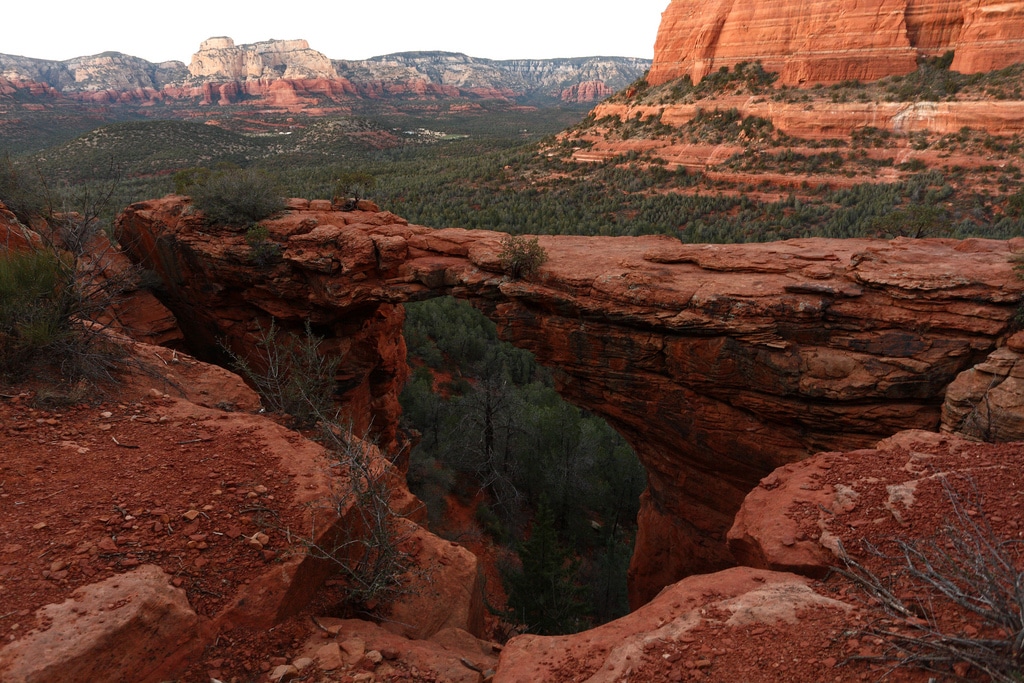We can thank weather and the earth’s natural cycles for all of it. Geologically speaking, Sedona is a gold mine. It offers a truly unique set of topographic features that is iconic for the southwestern region of the United States. Explore these features as you hike, off-road, drive, bike, or even horseback ride through the stunning landscape in Sedona.
Sheer Cliffs
One of the first characteristics of the terrain that you will notice is the steep and sheer cliffs that scatter the topography. These sharp and flat edges are the result of this area’s particular strata. The harder upper layers you see at the top of the cliffs are made from basalt and limestone, both of which are very hard and dense. The underlying layers are made of sandstone, which is softer and porous. Instead of a gradual deterioration from rain and weather starting from the upper layers, the softer materials below break apart faster. The heavier and denser basalt and limestone above cause the cliff side to fall off in large slabs or chunks. The results are the sharp and clean-cut peaks you see today. Some canyon walls in the Sedona area range upwards of 2,000 feet high.

Easy to Spot Strata
The sheer cliffs that line the horizons in Sedona have undeniable stripping which runs horizontally across the rock faces. These lines are known as strata, or a stratum, and they tell you a story. Each layer shows a change in the landscape reaching back hundreds of millions of years. A layer towards the bottom may be sandstone, which is formed as dirt settles and is hardened by pressure and water over the years. The next layer may be shale which indicates and ocean floor once laid there. The colorful results help geologists determine the timeline of the area, help them date fossils, and more. Dating fossils and layers of rock based on strata is known as relative dating, and is a major factor in how we date the earth.

Hidden in the Layers
Weather breaks down the rock over time, exposing layers that have been covered until now. When those layers are exposed, you can find a world of treasures that have been hidden for years. This is often how new plant and animal fossils are found, typically in sedimentary layers. The angle of the strata help paint a picture of what is going on below and in the area on a larger level. Geologists are able to read strata like a book, and learn tremendous amounts about the area.
See It for Yourself
There are so many ways to enjoy the incredible beauty found in and around Sedona, Arizona. Anyone who is a geology buff, is studying similar subjects, or simply enjoys the beauty of the outdoors will find the Sedona area a prime location for work, relax, and play. For those who want to get a special look at the Sedona area, consider a Sedona Tour from Grand Canyon Adventures. Get professional knowledge on the geology, history, and ecology of the area. Let a local professional pilot you across the Sedona countryside giving you a personal and unique perspective of the area. It will be something that you will never forget.

